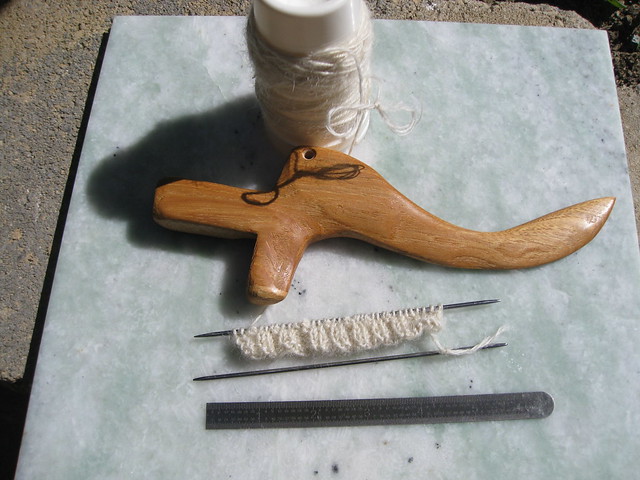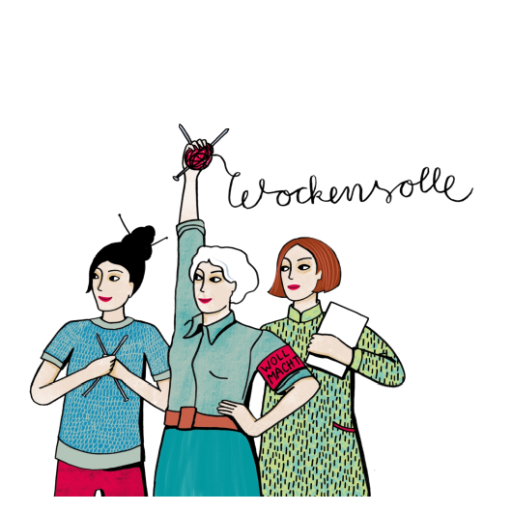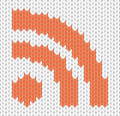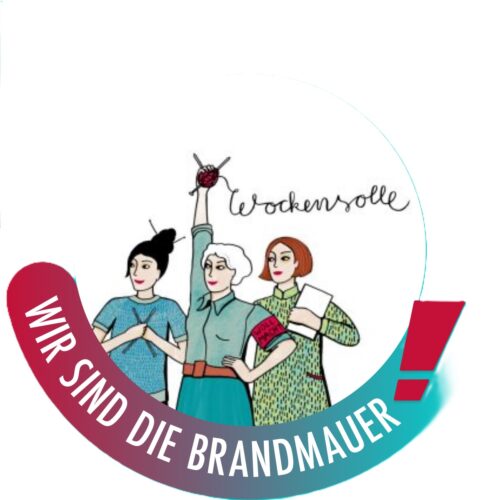One-handed knitting is not impossible.
Stricknadeln sind ja nun selbstverständliche Werkzeuge, wenn man stricken möchte, seien es Rundnadeln, Jackennadeln, Nadelspiele. Und daß man einerseits auf die kontinentale oder die englische Weise stricken kann, habe ich inzwischen auch gelernt (wenn ich auch noch nicht englisch stricken kann). Dann gibt es noch Reihenzähler, Nadelkappen, Zopfnadeln, Project-bags und was noch alles.
Aber knitting sticks, knitting sheats und knitting belts sind mir unbekannt und ihre Anwendung ist mir doch etwas suspekt (wat de boer net kennt freet he net). Knitting Sheats und Knitting Sticks machen mich neugierig.

Sheats oder Sticks scheint es im englischsprachigen Raum, aber auch in Holland zu geben oder gegeben zu haben. Man steckt eine Stricknadel in den Stock und den Stock in den Gürtel. Dadurch ist die eine Nadel befestigt und man kann (auf die englische Weise) stricken, während man Schafe hütet, Kühe melkt oder den Liebsten streichelt.
Gearbeitet waren diese Sticks aus Holz, einfach oder geschmückt, mit Edelmetall verziert, oder man nahm ein einfaches Strohbündel. Sie waren ein Alltagsgegenstand oder eine Liebesgabe. Eine besondere Variante sind die Gänseflügel-Sheats, die sich an die Hüfte anschmiegen und so besonders angenehm zu nutzen sind. (Das obige Photo zeigt solch ein Goosewing-Sheath).
Dieses Bild aus dem Photostream von agres@sbcglobal.net (ein anderer Name ist nicht angegeben bei Flickr) zeigt den Inhalt einer Stricktasche und dabei ist auch ein solcher Strickstock. Die Bilder dieser Sammlung sind zwar nicht oder nur wenig kommentiert, aber der Photostream stellt beeindruckende Strick-Utensilien vor.
Zu diesem Bild gibt es auch eine Erklärung:

Zwei moderne knitting sheaths, mit den Adaptern kann man mit einem Sheath 4 verschiedene Nadelstärken benutzen.
In dem Archiv einer Newsgroup habe ich den Thread the ongoing story of knitting sheats gefunden, an den sich auch die/der Fotografin, deren/dessen Flickr-Bilder ich hier eingebunden habe, beteiligt. Ich zitiere kurz aus einem Beitrag:
The knitting stick was tucked inside the shepherd, fisherman, and farmer¹s belt or tied to his waist with a rope. They were made of wood, copper, tin, bone, ivory, silver, leather and even gold. The average size is about 20 cm. At one end there is a tiny hole of about 2 cm deep, to put your knitting needle in. They were straight, or sometimes curved, or even with a hooked shape. They are all elaborately carved and decorated. I would say of the ones I have seen in the pictures, that they are all pieces of art. The men tucked this tool inside their belt, or sometimes they made a hole in the stick to pull their belt through. They often had this stick sitting on a slant or in a vertical position. Women on the other hand seemed to have had it laying more horizontal, either tucked under their arm, or in the apron band. While writing the last sentence, I realize that that is why my mother and Otto¹s mother tucked their knitting needles under one arm; a continuation of the knitting stick tucked under the arm. Some of the sticks would have a ring attached to them with a short chain, to attach to the clothing. A hook carved into the wood was to hang your yarn onto. It would make it easier to carry your ball of yarn around as well as have your hands free, if you were walking or standing about.
The practical purpose of this tool was to be able to put your knitting needle into this stick, and have one hand, or both hands free if needed. It gave stability to the work you were knitting, and also extended the size of the short knitting needles. Here comes to good part Aaron and Noreen, the other reason for using the stick was that the knitting could be done faster. More socks, caps, shawls and socking knitted the more money was earned.
Die meisten Informationen zu diesem Thema fand ich auf der Seite "Knitting sheaths & belts - Helping the busy knitter" . Dort wird erklärt, daß Stricken in vergangener Zeit nicht wie heute in der Freizeit ausgeübt wurde, sondern zum Broterwerb und so suchte man Wege, auch bei anderen Beschäftigungen stricken zu können. Dort wird auch zu den Terrible Knitters im Dent VillageCentre in Nord-Cumberland / Großbritannien verwiesen. Auch hier war Stricken eine Nebenerwerbsmöglichkeit und wurde von Kindern, Frauen und Männern ausgeübt. Letztere haben allerdings, als die Kunde von den Farmern, welche mit einer Hand stricken und mit der anderen Hand die Kühe melken, immer mehr Neugierige anzog, mit dem Stricken aufgehört.
Und zum Schluß noch ein Bild aus dem Flickr-Photostream, das zeigt wie man heute mit einem solchem Sheath strickt:

Hier nocheinmal Links zum Thema:
- Knitting sheaths & belts - Helping the busy knitter
- Authentic Dale Knitters (siehe auch das Video dort)
- Birmingham Museum and Art Gallery: Goosewing Knitting Sheath
- Der Flickr- Photostream mit den tollen Utensilien
Accessoires für die Strickerei aus mostly englishsprachigen Landen















